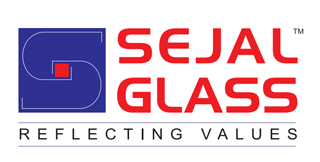
- Business Enquiry: +91-22-2866 5100 / 6932 5100
- info@sejalglass.co.in
- login

When entrepreneurs talk about business, China immediately comes to mind. Many firms wish to corner a share of its huge market. Glass industry businessmen are no exception. But India, a place where “glass sells like crazy”, is another country they can bet on: here, according to the Master Guide to Indian Glass, the demand for flat glass has increased at an average annual rate of 12% to 15% for the past 2-3 years and, over the long term, is expected to grow at around 3.8% per year. The demand for processed glass has also grown by more than 30% annually in recent years.
The construction and automotive industries are the most important consuming sectors: almost 80 million square feet of land in India is earmarked for shopping malls. Nowadays, taking climate, safety, sound attenuation, energy conservation and aesthetics into consideration, builders are opting for more glass in their construction. The glass revolution is also taking place in the automotive industry which is predicted to grow following an 8% cut in excise duty on vehicles and the easy availability of flexible automobile loans.
It goes without saying that the rapid increase in demand during the 1990s, in addition to provoking a cutback in exports, charmed some international firms which now are the major producers of float glass. Close to them there are about 27 domestic companies which have been forced to expand their capacities and diversify into new areas in order to remain competitive.
Totally, the flat glass industry grew by about 80% between 2000 and 2006, resulting in a compound annual growth rate of 10.1%. The per capita consumption of glass, which was 0.41 kg in 1999, reached 0.76% kg in 2006.
Anyway, it isn’t all “peaches and roses” in India : problems like the overcapacity of raw glass (and a projected surplus of processed glass), Chinese competition (in spite of anti-dumping duties) and the lack of codes of standards threaten Indian glass industry. As far as overcapacity concerned, analysts say that the supply will far exceed demand at least until 2009. Excess capacity, increased competition and the development of a regulatory framework are the real future challenges for the Indian glass industry.